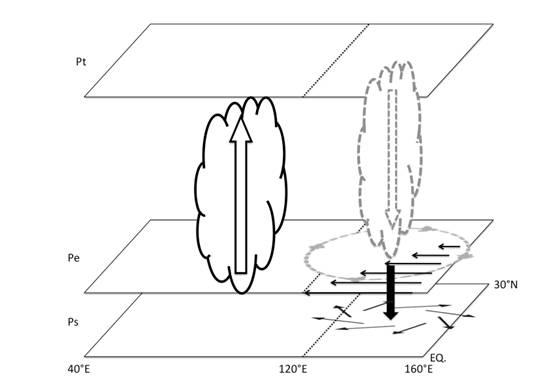Relationships between East Asian monsoon and tropical air-sea interaction are revealed by a newly developed SEOF analysis method
Date:2013-03-08
A season-reliant Empirical Orthogonal Function (S-EOF) analysis was applied to seasonal mean precipitation over the East Asia. Two dominant modes are obtained, corresponding to post-ENSO year and ENSO turnabout, respectively. The two modes are associated with a series of tropical air-sea interactions in the Indian Ocean and Pacific. Based on the observational analysis, we found a season-dependent Indian Ocean forcing scenario. The Indian Ocean basin-wide warming during the El Nino mature winter and the subsequent spring does not have a significant impact on anomalous atmospheric circulation over the western North Pacific (WNP), as convection over the tropical Indian Ocean is suppressed by the remote forcing from equatorial central-eastern Pacific. In contrast, it plays an active role in impacting the WNP anomalous anticyclone during the ENSO decaying summer. Finally, we proposed the mechanisms through which tropical Indian Ocean influence East Asian summer monsoon (Fig. 1).
Wu Bo., Tianjun Zhou, T. Li, 2009: Seasonally Evolving Dominant Interannual Variability Modes of East Asian Climate, Journal of Climate, 22, 2992-3005. (cited by 31)

Figure 1 Schematic diagram illustrating how the tropical Indian Ocean heating influences the WNP monsoon during the El Nino decaying summer. Ps, Pe and Pt denote the pressure at the surface, the top of the planetary boundary layer and the top of the troposphere, respectively. In response to the enhanced convection over the tropical Indian Ocean, easterly wind anomalies (solid black arrowheads on Pe) are established as an atmospheric Kelvin wave response to the anomalous heating. Theanomalous anticyclonic shear vorticity induces the anomalous subsidence (thick black arrowheads) due to the Ekman Pumping effect and thus the boundary layer divergence (solid black arrowheads between Pe and Ps). The anomalous boundary layer divergence further leads to suppressed convection (dashed curve and hollow arrowhead) and low-level anomalous anticyclone (dashed circle) over the WNP.
